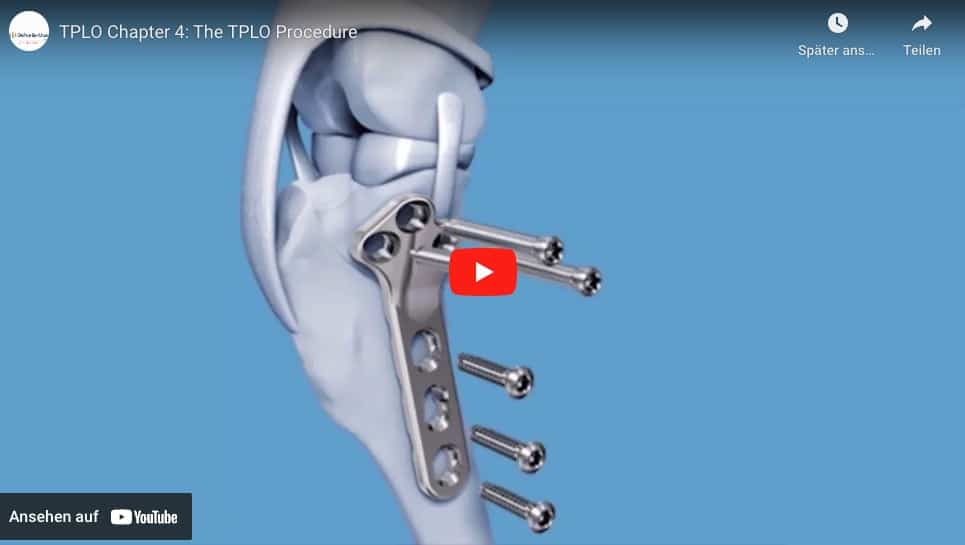introduction
TPLO (Tibial Plateau Leveling Osteotomy) is a surgical technique used in dogs to treat knee injuries. It is a surgery that is usually very successful and most dogs recover quickly and completely. However, as with any surgery, there are complications that can arise with TPLO. In this article, we'll look at some of the most common TPLO complications and how you can help your dog avoid them.
Common TPLO complications
- Infections: One of the most common complications is the development of infections at the surgical site. This can be caused by improper wound care or inadequate sterility during surgery. If you notice any signs of infection such as swelling, redness, or pus formation, contact your veterinarian immediately.
- Implant Failure: TPLO surgeries use a metal plate and screws to stabilize the dog's knee joint. These implants can become loose or break, resulting in reinjury or pain. Your veterinarian can help you correct this problem, but further surgery may be necessary.
- Non-healing: Sometimes bone healing after surgery may take longer than expected or not occur at all. In such cases, your veterinarian may recommend additional testing or further surgery to ensure your dog's knee is completely healed.
- Nerve Damage: During surgery, nerves around the knee joint can be damaged, causing numbness, pain, or other problems. In most cases, this damage heals within a few weeks or months, but in rare cases it can be permanent.
- Thrombosis: Dogs who undergo TPLO surgery are at increased risk of blood clots in their legs. This can lead to pain, swelling or even pulmonary embolism. Your veterinarian may prescribe blood thinners or other medications to minimize this risk.

How to avoid TPLO complications
Although TPLO complications can be serious, there are steps you can take to minimize the risk. Here are some tips that can help you:
- Choose an experienced veterinarian, for example our small animal center in Karlsruhe , where we perform cruciate ligament operations daily: It is important that you find a veterinarian who has sufficient experience and expertise in performing TPLO operations. Ask your veterinarian about their track record and how many TPLO surgeries they have performed.
- Perform a comprehensive exam before surgery: Before surgery, your veterinarian should perform a comprehensive exam to ensure your dog is suitable for surgery. This includes blood tests, x-rays and a thorough examination of the knee joint.
- Follow Post-Operative Instructions: After surgery, your veterinarian will provide instructions for your dog's care and rehabilitation. It is important that you follow these instructions carefully to minimize the risk of complications and promote a speedy recovery for your dog.
- Monitor your dog carefully: After surgery, you should carefully monitor your dog and watch for signs of complications. If you notice anything unusual, such as pain, swelling, or lameness, contact your veterinarian immediately.
FAQs
Are TPLO complications common?
Although TPLO surgeries are usually very successful, complications such as infections, implant failure, or nerve damage can occur. The risk of complications can be minimized if you choose an experienced veterinarian and carefully follow the postoperative instructions.
What are the signs of infection after TPLO surgery?
Signs of infection may include pain, swelling, redness, or pus formation at the surgical site. If you notice these symptoms, contact your veterinarian immediately.
How long does recovery take after TPLO surgery?
Recovery from TPLO surgery can take several weeks or months, depending on the severity of the injury and the progress of bone healing. Your veterinarian will provide you with instructions on how to care and rehabilitate your dog to promote a speedy recovery.
Conclusion:
TPLO surgery is a proven method for treating knee injuries in dogs. Although complications can occur, you can minimize the risk by choosing an experienced veterinarian, carefully following post-operative instructions, and carefully monitoring your dog.
If you notice any signs of complications, contact your veterinarian immediately. By following these steps, you can help ensure your dog has a successful TPLO surgery and a speedy recovery.
If you have any further questions, please contact us directly using our form .
